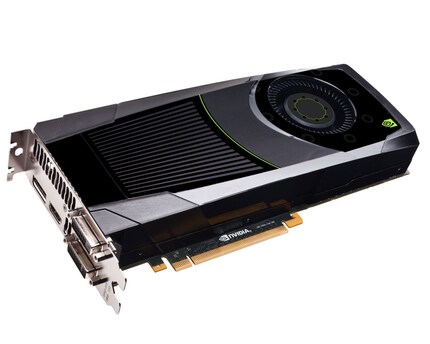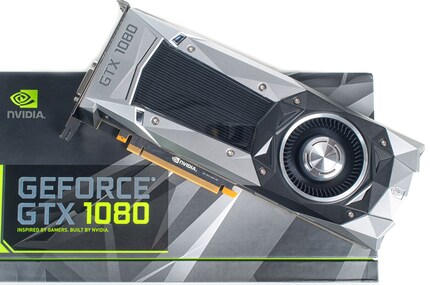
Background information
Trying out GeForce Now with RTX-5080 performance
by Samuel Buchmann

The GTX 16 series is to be discontinued. And with it, the last remnant of the GTX era. Here’s a look back at the highlights and lowlights of Nvidia graphics cards with this prefix.
This week it was announced that Nvidia plans to discontinue the last GTX series. The graphics cards in the GTX 16 series are in the lower segment, making them particularly popular in budget computers and e-sports titles. This halt in production marks the end of an era that began with the GeForce 200 series, which was over 15 years ago.
Many will have fond memories of the GTX 1080. However, not all GTX models were good. Some of them were genuine flops.
The GTX 480, based on Fermi architecture, as well as the entire Geforce 400 series were plagued by several problems. As a result, AMD became the best GPU manufacturer in 2010 and almost overtook Nvidia in terms of market share.

In particular, its energy consumption and heat production were off the scale. A single GTX 480 required as much power as dual-GPU systems at the time. In games, the card heated up to 94 degrees Celsius. Looking at it from today’s perspective, this doesn’t seem unusual, but in 2010 it was a different story. Pedantic commentators then quickly rephrased Nvidia’s then tagline from «the way it’s meant to be played» to «the way it’s meant to be grilled».
At the time, competition from AMD was fierce. The HD 5870 had already been on the market for six months and achieved 90% of the performance of the GTX 480. And the AMD card remained cool and required less power. That’s why Nvidia discontinued the GTX 400 series eight months after its release and launched the GTX 500 series. This wasn’t a new architecture, just an improved Fermi.
While it’s hard to imagine today, AMD’s top graphics cards used to be more powerful than Nvidia’s. This was also the case with the HD 7970 in 2012. However, two months after its launch, Nvidia was able to strike back. The GTX 680 not only offered increased performance, but for the first time, it was also more efficient and boasted the smaller chip.

The latter two points were of particular importance to Nvidia. At that time, the GPU designer was always behind AMD when it came to these. It was a sign that the tide had turned in Nvidia’s favour. For several generations, the two manufacturers went head-to-head. However, Nvidia was usually slightly in front and finally established itself at the top with the GTX 900 series.
The GTX 970 was originally well received. At this point, AMD was no longer a serious competitor for Nvidia. Even its number two GTX 970 put AMD’s flagship R9 290X in its place.
A few months after its release, however, it came to light that only 3.5 of the advertised 4 GB of VRAM could be used at full speed. The remaining 0.5 GB was only slightly faster than the DDR3 system RAM that was standard at the time. Nvidia was subsequently sued but settled out of court and paid 30 dollars to everyone with a GTX 970.

That being said, in 2013 and the following years, there were very few games that required more than 3.5 GB memory. If a game didn’t run smoothly, it was more due to the card’s performance than the available RAM. Nevertheless, Nvidia wasn’t truthful about the specifications, which certainly didn’t help the company’s reputation.
However, the negative press regarding the GTX 970 did nothing to dampen the popularity of Nvidia cards. This is because AMD competition was virtually non-existent at the time of the GTX 10 series launch – mainly due to chip production. Nvidia relied on TSMC’s 16nm process, while AMD used Global Foundries’ 14nm. And what a mistake that was. TSMC’s process was far superior to that of Global Foundries.

The GTX 1080 was over 30% faster than the GTX 980 Ti. This represented an enormous leap in performance for that time. The 1080 was also cheaper than the 980 Ti.
With the help of the GTX 1080 and other cards in the RTX 10 series, Nvidia was able to take over almost the entire GPU market. AMD only played a marginal role in the midfield. The only competition for the GTX 1080 was the GTX 1080 Ti, which was launched later. So basically, competition from itself. Nvidia still holds this market-dominating position. Its competitor AMD hasn’t yet managed to reach the top of the performance league.
Meanwhile, Nvidia made the prefix change from GTX to RTX as early as 2018 with the RTX 20 series. Incidentally, this stands for Ray Tracing Texel Extreme and shows that Nvidia was fully committed to ray tracing from this generation onwards, leaving Giga Texel Shader Extreme behind.
Header image: Shutterstock
From big data to big brother, Cyborgs to Sci-Fi. All aspects of technology and society fascinate me.
Interesting facts about products, behind-the-scenes looks at manufacturers and deep-dives on interesting people.
Show all